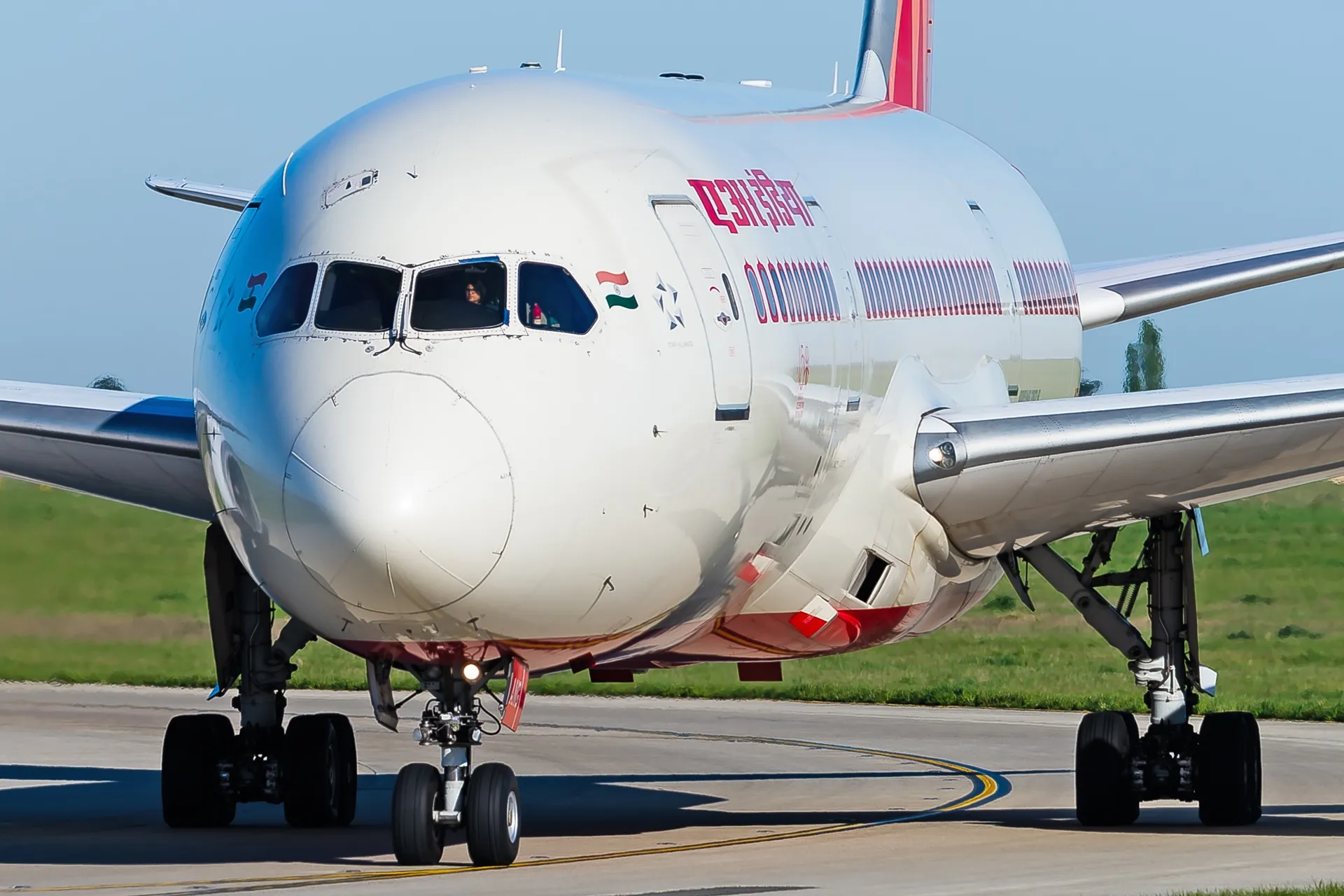DALLAS — Recent headlines report that India and Singapore have instructed their airlines to inspect fuel switches on several Boeing models following last month's fatal Air India (AI) 787 crash. South Korea plans to do the same.
Given the Dreamliner's track record, is this new set of inspections a way to placate public anxiety following India's release of an inconclusive preliminary report?
Until June 12, the Dreamliner had a perfect safety record with no fatal accidents or hull losses. Over 1,100 Boeing 787s are in service globally, with more than 1,175 delivered, making it one of the best-selling wide-body aircraft in the world.
In addition, over the last 14 years, the Dreamliner fleet has flown nearly 5 million flights and accumulated over 30 million flight hours, safely carrying more than 1 billion passengers—a milestone unmatched by any wide-body aircraft in the same timeframe.
In all those years and tens of millions of hours in flight, there are no documented cases of malfunctioning fuel switches causing fatal accidents or in-flight engine shutdowns on the 787.
Even the preliminary report on the AI disaster does not point to a mechanical defect in the fuel switches. Instead, it highlights cockpit confusion, with recorded exchanges between the pilots, one asking the other why the fuel had been cut off and the other denying having done so.
Inspection campaigns triggered by this tragedy, now underway worldwide, have so far reported no faults related to the fuel switch mechanisms.
The Sudden Urgency
After years of uneventful operation, it’s difficult not to see these immediate calls for inspections as an attempt to be doing something. It’s a classic response to crisis: offer visible action, even if it doesn’t address the root cause. Regulators and airlines are aware that these switches have quietly functioned without incident across a global fleet for more than a decade.
The sheer volume of 787 flights suggests that focusing on the fuel switches may distract from more complex human or systemic factors at play in the Air India crash. It’s easier to tighten a checklist item than it is to confront issues such as pilot training, cockpit procedures, or even more profound cultural and regulatory challenges.
The sudden wave of inspections, while superficially reassuring, is more a performance of vigilance than a solution to an identified risk, however difficult that may be, especially when over a thousand Dreamliners have flown safely for so many years without a single previous incident from these very same fuel switches.
While we understand the sentiment for such inspections, the hard work of improving aviation safety lies beyond such visible, but ultimately cosmetic, gestures.
.webp)
The Engine Fuel Cutoff Conundrum
The preliminary investigations of the fatal AI171 crash indicate both of the aircraft’s fuel CUTOFF switches were flipped to the “CUTOFF” position seconds after takeoff, leading to dual engine shutdown and loss of thrust.
Cockpit voice recorder data revealed confusion among the pilots, with one asking why the other had cut off the fuel, and the other denying having switched it off. There is no evidence that the switch activation was intentional, accidental, or triggered by a technical fault.
Boeing’s Production Quality Woes
It is no surprise that Boeing's infamous quality control and manufacturing issues, especially after the 737 MAX disasters and a high-profile 737-9 Max door plug blowout in 2024, are in everyone's minds. These incidents revealed systemic shortcuts and corporate cultural shifts prioritizing production speed and the bottom line over safety protocols and engineering excellence.
Last year, the American manufacturer implemented a safety improvement plan, faced regulatory scrutiny, and made some progress in correcting production line errors, such as “traveled work” (out-of-sequence assembly).
Whistleblowers, the media, and official investigations have repeatedly highlighted problems, including staffing cuts for quality inspectors, skipped manufacturing steps, foreign object debris inside aircraft, and a culture of retaliating against employees who raise safety concerns. While Dreamliner assembly wasn’t immune to these pressures, the model maintained a strong safety record before the Air India crash.
The initial AI crash reports emphasize that the fuel switches were deliberately or inadvertently activated to “off,” but have not found evidence so far of a production defect or mechanical fault in the fuel switch hardware or electronics.
Worldwide Dreamliner fleet inspections conducted after the crash have yet to uncover systematic fuel switch malfunctions or manufacturing flaws, suggesting that, at least regarding this specific component, Boeing’s much-criticized manufacturing process is not yet directly implicated.
Broader concerns remain. Multiple sources document a longstanding pattern of Boeing’s corporate practices eroding the safety and oversight that previously defined the company, particularly after the merger with McDonnell Douglas. These cultural and quality lapses could, in theory, create vulnerabilities that only surface under rare circumstances.
Current Consensus
There is no direct evidence yet that Boeing’s current or past production quality problems caused or contributed directly to the fuel switch incident underlying the Air India crash.
However, the incident has heightened scrutiny of Boeing’s safety culture and manufacturing practices. Given the ongoing investigations and Boeing’s well-documented issues, it would be premature to dismiss the possibility that deeper, less visible process or oversight flaws might eventually play a causative role.
For now, the consensus in both regulatory and independent reviews is that this tragedy stands apart from Boeing’s chronic production quality lapses, which have primarily affected other aircraft models and different systems.
What About the Boeing 737 MAX Precedent?
The Boeing 787 Dreamliner and the 737 MAX embody radically different philosophies and execution in aircraft development, beginning with the former's clean-sheet design and the latter's evolutionary upgrade.
Boeing started the Dreamliner design from scratch to develop an entirely new aircraft. The 787 introduced a host of innovations, including a primarily composite airframe, new electrical systems, advanced aerodynamics, and either Rolls-Royce or GE next-generation engines. Nothing fundamental was carried over from previous Boeing models, enabling significant leaps in efficiency and passenger comfort.
The 737 MAX, in contrast, is an evolutionary upgrade of the decades-old 737 platform. Instead of creating a new airframe, Boeing re-engined and modified the existing 737 design to compete quickly with the Airbus A320neo. Boeing retained the most original systems and core architecture to enable faster certification and minimal pilot retraining.
The most notable changes for the MAX were aerodynamic tweaks and the addition of the new, larger LEAP-1B engines, which in turn required shifting engine placement and introducing MCAS software to mimic the previous model’s handling characteristics.
Project Scope, Risk, and Complexity
The Dreamliner's development was gargantuan and risky. Boeing delegated much of the work to a global network of suppliers and attempted to incorporate cutting-edge materials and technology on a massive scale, resulting in substantial delays, cost overruns, and growing pains. Boeing took its time, thus producing genuine technological improvements.
Furthermore, because it was an all-new aircraft, the Dreamliner underwent a lengthier, more rigorous certification process, with numerous new technologies and materials under close regulatory review.
Development of the 737 MAX was intentionally conservative by comparison. Boeing aimed for speed to market, cost effectiveness, and incomplete training requirements. By keeping the aircraft under the same type certificate as earlier 737s (amended rather than new), Boeing was able to bypass the lengthy timeline and scrutiny typically required for a brand-new design.
To ensure continuity and ease the path to market, Boeing sought to treat the MAX as just another variant of the 737, leading to minimizing the need for pilot retraining and accelerated FAA approval, but also meant Boeing introduced some new systems (like MCAS) with less transparency and, arguably, regulatory oversight, all leading to fatal consecuences.
Engineering Tradeoffs, Risk Management
The bulk of engineering risk in the Dreamliner development was associated with unproven materials and manufacturing processes, resulting in high visibility delays and fixes as new challenges emerged. The tradeoff resulted in a genuinely novel product in commercial aviation.
Boeing hid the risk in the MAX program: subtle aerodynamic changes to accommodate larger engines under an existing airframe necessitated software workarounds (MCAS), which led to tragic results when these were poorly documented and misunderstood.
The 787 Dreamliner was Boeing at its best: a leap into new territory via a complex, costly, but ultimately transformative development for commercial aviation. The 737 MAX was Boeing at its worst: a rapid response to competitive pressure; faster and cheaper to develop, but with risks concealed by its evolutionary approach.
Still Unexplained
Aviation is a marvel in any regard; the Dreamliner is a marvel of engineering. Yes, Boeing’s cloud of quality concerns has tarnished its reputation for the foreseeable future. However, available evidence does not demonstrate a direct causal relationship between these systemic problems and the Flight AI171 crash.
The root cause of the crash remains unknown, and human factors and cockpit interactions are also under investigation. However, so far, mechanical and production-related explanations are unproven but under review.



.webp)
